В.Шавров История конструкций самолетов в СССР до 1938 г.
"Кертис" сухопутный - самолет однотипный с его поплавковыми вариантами, один из первых самолетов, давших рекордные показатели в 1909 г. Это был ферменный одноместный биплан е передним и задним рулями высоты, на трехколесном шасси, с толкающей установкой двигателя "Кертис" в 65 л. с. Фермы первоначально были из бамбука, позднее - из стальных труб, стойки коробки крыльев - деревянные, обтяжка двухлонжеронных крыльев первоначально шла только поверху. В России было два таких самолета: одним из них - самолетом в бамбуковыми фермами - владел поэт Василий Каменский, а другой был в морской авиации Черного моря.
Самолет|| сухопутный
Год выпуска||1910
Двигатель, марка||
Мощность, л.с.||65
Длина самолета, м||8,8
Размах крыла, м||9
Площадь крыла, м2||28
Масса пустого, кг||350
Масса топлива+ масла, кг||70
Масса полной нагрузки, кг||150
Полетная масса, кг||500
Удельная нагрузка на крыло, кг/м2||17,8
Удельная нагрузка на мощность, кг/лс||7,7
Весовая отдача,%||30
Скорость максимальная у земли, км/ч||72
Скорость посадочная, км/ч||60
Время набора высоты 1000м, мин||20
Потолок практический, м||2000
Продолжительность полета, ч.||3
P.Bowers Curtiss Aircraft 1907-1947 (Putnam)
Evolution of the Curtiss Pusher
In the period 1909-12, the major Curtiss design and manufacturing effort was directed to the development of a basic model that historians later called 'The Curtiss Pusher'. This was a direct descendent of the final AEA design, the Silver Dart. The major change was redesign of the wings to simple rectangular shape with no dihedral and relocation of the ailerons to the mid-points of the forward wing struts. The aileron relocation was done partly for efficiency but mainly to separate those surfaces from the wing in an attempt to avoid infringement of the Wright patent.
The earliest models were all single seaters, with the pilot seated slightly ahead of the wing. The single water-cooled Curtiss engine of 26 to 90 hp was mounted between the wings behind him, driving a single propeller. Forward elevator controls were carried on bamboo booms ahead of the pilot while a fixed stabilizer and movable rudder were carried on booms behind. The ailerons were operated by shoulder yoke, the pilot leaning in the direction he wished to bank, a 'natural' function for Curtiss, the former motorcycle champion. As on the AEA types, the wings were originally covered on the top surfaces only.
Logical improvements such as more powerful engines and double-surfaced wings improved performance and made a practical vehicle of the pusher by allowing two people to be carried. Curtiss then developed a throw-over control column whereby the single control wheel could be moved from one pilot to the other. This was an improvement on the Contemporary Wright brothers' system, where two pilots shared one-and-a-half sets of controls, and developed into recognized 'left-seat' and 'right-seat' Wright pilots.
No designations were assigned to the early Curtiss models, which were merely identified according to their purchaser or the specific purpose for which they were built. As custom-built machines, each incorporated differences from its predecessor, and then took on additions that have further complicated the historians' recognition problems. Improved models illustrated in contemporary publications were identified only as 'The New Curtiss' or 'The XX Horsepower Curtiss',
Even after the assignment of official model designations, positive identification of individual Curtiss pushers of the 1910-13 era was impossible, A number of close copies were built by outsiders, who either used Curtiss-built machines as a guide or built from the workable plans that appeared in contemporary books and magazines and made various changes, Also, special features of aeroplanes custom-built by Curtiss, plus modifications and the use of parts from other models, further complicate the identity problem.
From 1909 into 1911, however, the major evolutionary changes in the pusher resulted in the recognition of the four distinct 'Types' listed here:
Type I - Single-seat machine with single-surface wings, biplane forward elevator on long forward booms, and fixed horizontal stabilizer located with rear rudder on long rear booms.
Type II -Single-seater similar to Type I except double-surfaced wings, ailerons relocated to rear struts.
Type III - Single- or two-seater with monoplane forward elevator on shortened booms, elevators added to horizontal stabilizer.
Type IV - Military model of Type III with wings built in short interchangeable sections to facilitate breakdown to small units for transport on Army wagons.
The Curtiss pushers started with a basic design and improved upon it, so the four definitive types seen from 1909 into 1911 can be regarded as developmental or evolutionary rather than experimental.
An oddity in the evolution of the pusher is inconsistency of later application of the forward elevator, which started as a biplane surface and then was simplified to a monoplane type before disappearing altogether. The one contribution that Augustus Herring is credited with making to Curtiss aeroplanes is the small forward vertical fin used on some of the 1909-11 models.
The need for the forward elevator was originally questioned by stunt pilot Lincoln Beachey, who successfully eliminated it from his exhibition machine late in 1910. While several experimental models subsequently flew without forward elevators, production aeroplanes continued to be delivered with them into 1912. On some Model Es, where the short forward booms formed an essential part of the bracing, the booms were retained after the elevators were removed subsequent to delivery. Four significant developmental pushers are now described:
Curtiss No.1, Gold Bug or Golden Flyer The first Curtiss-built aeroplane designated as such was the single-seat model ordered by the Aeronautical Society of New York on 2 March, 1909, The purchase price of $5,000 included instruction for two Society members, With no designation, No, 1 was initially called Gold Bug because of the golden tint of the varnished fabric but later officially became the Golden Flyer, Although built after the Herring-Curtiss affiliation, Curtiss specifically excluded No.1 from the inventory of the new company.
Curtiss-Herring No.1, Reims Racer At the urging of the Aeronautical Society ofNew York to represent it in the 1909 Gordon Bennett Cup Race in France, Curtiss built a larger version of No. 1 and installed a new 60 hp V-8 engine, which was a carefully-guarded secret until the racer was set up in France in August.
Flying against the clock rather than other aeroplanes, Curtiss completed the 20 km closed course at a world's record 43,35 mph (69,76 km/h). The Reims Racer was later used by Curtiss and his pilots for exhibition work and other record flights in the United States.
Hudson Flyer In 1909, Glenn Curtiss decided to try for the $10,000 prize posted by the New York World newspaper for the first flight between Albany, the capital city or New York State, and New York City. After many delays due to weather, the record 156-mile (251 km) flight was made on 29 May, 1910. The start was at Albany, with a refuelling stop at Poughkeepsie and a precautionary stop within the northern city limits of New York before the final landing on Governor's Island.
The Hudson Flyer was a stock model Curtiss or the period, modified for the flight. Since the entire route was over the Hudson, emergency flotation gear was added. To preclude nosing over on alighting on water, a hydrovane was installed ahead of the nosewheel at the suggestion of Charles Willard, who had made two unintentional alightings in the Golden Flyer. To carry the weight or the extra equipment and fuel, the area of the upper wing was increased by adding strut-braced extensions to the tips.
Beachey Special Curtiss exhibition pilot Lincoln Beachey, whose early fame came from dirigible racing, was the leading American stunt pilot of the 1911-14 period and was the first American pilot to perform a loop. He could have been the first in the world, but when he proposed the idea to Curtiss in 1912, Curtiss said it couldn't be done and forbade him to try.
In 1911, to improve Beachey's performance, Curtiss built him a special extra-strength and higher powered showplane. As requested, this did not have forward elevators since Beachey had already proved that the standard model could do without them. Beachey used his Special to set the world's altitude record or 11,642 ft (3,548 m) on 20 August, 1911.
By mid-1911, when Curtiss pushers were pretty well standardized and being manufactured in what could be considered production quantities, Curtiss began to use specific designations in its advertizing. The following descriptions of officially-designated D and E models are reproduced verbatim from the 1911 Curtiss Aeroplane Company catalogue. The Curtiss A to C designations, if used at all, cannot be correlated to specific aeroplanes or configurations; the designation Model C is seen on some photographs or June Bug, apparently added by later misguided historians.
Model D
SPECIFICATIONS
Width - Planes, over all, 33 feet, 4 inches.
Length - Front to rear control, 25 feet, 9 inches.
Height - From ground to highest points, 7 feet 5 1/2 inches.
DESCRIPTION AND PRICES
Model D-4 - Equipped with a 4-cylinder, 40 H. P., water-cooled Curtiss motor. An excellent machine for exhibition work, endurance, etc. Speed, 45 miles per hour. Weight ready for flight, 550 pounds. Weight, packed for shipment, 950 pounds. Price, complete for shipment. $4,500
Model D-8 - Equipped with an 8-cylinder, 60 H. P., water-cooled Curtiss motor. Entire outfit identical with that used by the famous aviators of The Curtiss Exhibition Co. The safest machine, and the most suitable for a confined space. Speed 60 miles per hour. Weight, ready for flight, 650 pounds. Weight, packed for shipment, 1,000 pounds. Price, complete for shipment $5,000
Model D-8-75 - Same as Model D, but equipped with an 8-cylinder, 75 H. P., water-cooled Curtiss motor. Capable of developing a speed of 70 miles an hour. For speed and cross-country races. Weight, ready for flight, 700 pounds. Weight, packed for shipment, 1,050 pounds. Price, complete for shipment $3,500
Model E
SPECIFICATIONS
Width - Planes, over all, 35 feet, 4 inches.
Length - Front to rear control, 25 feet, 9 inches.
Height - From ground to highest point, 8 feet.
DESCRIPTION AND PRICES
Model E-4 - Equipped with a 4-cylinder, 40 h.p. water-cooled Curtiss motor. This machine is a slow, strong flying aeroplane, especially suitable for aviation schools and beginners. It is also available for high, dry altitudes. Speed, 40 miles per hour. Weight, ready for flight, 600 pounds. Weight, packed for shipment, 1000 pounds. Price, complete for shipment $4,500
Model E-8 - Equipped with an 8-cylinder, 60 h. p. water-cooled Curtiss motor. A machine that combines speed with the advantages of weight-carrying. Equipped with the Curtiss alternating dual control system. A machine that makes aviation a sport. Speed, 55 miles per hour. Weight, ready for flight, 700 pounds. Weight, packed for shipment, 1050 pounds. Price, complete for shipment $5,000
Model E-8-75 - The same as model E-8, but equipped with an 8-cylinder, 75 h. p. Curtiss motor. The surplus power gives greater speed as well as more weight-carrying possibilities. Speed, 60 miles per hour. Weight, ready for flight, 750 pounds. Weight, packed for shipment, 1,100 pounds. Price, complete for shipment $5,500
DESCRIPTION AND PRICES
Model D-8 - Exhibition type with hydro equipment, in addition to the regular chassis. Price, complete. $5,500
Model E-8-75 - The "triad" passenger carrying hydroaeroplane, which is identical with Model E when the hydro is not attached. This machine is equipped with a 75 h. p. motor. Price $6,000
With standardized Curtiss pushers in production and being advertized world-wide, business was brisk by 1912. The aeroplane and engine factories were enlarged and licences were issued for the manufacture of pushers in other countries.
While a basic design was sold, there were special custom variations. Aviatrix Ruth Law, for example, had learned to fly on a Wright aeroplane with its peculiar control system and could not make the transition to the Curtiss system. Consequently, her custom-built Curtiss D was fitted with Wright controls.
Between them, the US Army and Navy bought twelve Curtiss land plane pushers in 1911 and 1912, and these are now discussed.
The US Army's second aeroplane was an existing model ordered on 13 March, 1911, for $6,000 and was delivered the same month. Identified as Signal Corps Aeroplane No.2, this was a single-seat Model D powered with a 60 hp Curtiss engine. The engine was soon replaced with a 40 hp model and the front elevator was removed some time later. No.2 ended its days as a 'Penguin' ground trainer after the Army grounded all of its pusher trainers in February 1914. Rebuilt to original configuration, it is now in The National Air Museum of the Smithsonian Institution.
Three two-seat Curtiss Es also went to the Army - S.C. numbers 6, 8, and 23. The original 40 hp engine of No.6 was exchanged for the 60 hp model of the smaller S.C. No.2, S.C.8 was eventually converted to a seaplane, and S.C.23 was sold out of the Service after the pushers were grounded.
The poor safety records of both the Wright and Curtiss pusher trainers at the Army's North Island school brought about a demand for safer tractor-type equipment and led directly to the development of the Curtiss J and N models that culminated in the immortal IN series.
Of eight Curtiss pushers bought by the US Navy between 1911 and 1913, only one was delivered as a landplane, and it was soon converted to a seaplane.
Shortly after World War I, a special 1912-style Curtiss pusher was built under Glenn Curtiss's personal direction at Garden City, evidently for nostalgic reasons. Such minor refinements as improved fittings and a revised control system featuring a rudder bar and wheel control for the ailerons were incorporated. Long a fixture at Curtiss Field, this machine was in the Roosevelt Field Museum until World War II and is now at The National Air Museum.
G.Swanborough, P.Bowers United States Military Aircraft Since 1909 (Putnam)
CURTISS D & E
The Army’s second aeroplane was a Curtiss Model D, similar to the standard Curtiss pusher with tripod landing gear and interplane ailerons then in production. Co-ordinated elevators at both front and rear were a standard feature. The single Army Model D was followed by three improved Model E’s, at least one of which was fitted as a single-pontoon seaplane. One similar Navy model (S/N AH-8, a dual-control trainer) was obtained from the Navy and was still in Army hands in 1919 before being returned. This machine was restored and briefly flown in 1928.
K.Molson, H.Taylor Canadian Aircraft since 1909 (Putnam)
Curtiss-Type Pushers
On 31 March, 1909, the Aerial Experiment Association was disbanded and the American rights to its patents were assigned to Glenn Hammond Curtiss. Curtiss adopted the basic AEA aircraft design and control system but, being an excellent practical mechanic, simplified and lightened it and added between-the-wings ailerons in an attempt to circumvent the Wright patent. He then produced a series of successful pusher aircraft that remained in production until 1913. They were powered by various four- and eight-cylinder Curtiss engines which were the best and most expensive in North America in that prewar period, and these engines were responsible for much of their success.
The Curtiss pushers became a popular type for amateur builders throughout North America and there were several reasons for this. They were well known, for Curtiss himself had won the 1909 Gordon Bennett Cup with one and in another won the New York World's prize in 1910 for an Albany-New York flight. In 1911 the famous Lincoln Beachey flew one through the Niagara gorge and under the suspension bridge, which rated headlines. In addition, they were the mounts of the Curtiss Exhibition Team pilots who flew in well-publicized demonstrations throughout North America. These exploits, coupled with the fact that the type was small and easily built and that difficult parts could be readily bought from aeronautical suppliers, made the type a logical choice of the experimenter. These copies were almost invariably powered by a North American-made engine other than the Curtiss because of cost considerations; and Curtiss, unlike the Wrights, was unconcerned about his design being copied.
The first Canadian-built Curtiss-Type pusher appears to have been that constructed by Riddick Elliott and Bruce Ross at Lindsay, Ontario, and then taken to Ottawa in September 1909. The aircraft was flown as a glider, apparently by Ross, while being towed at 28 mph (45 km/h) by an automobile. An engine was planned to be installed but no further information is available.
In 1911 the Constables of Sarnia, Ontario, built a Curtiss Model D, closely following the original design, but powered by a three-cylinder Elbridge Featherweight engine of 30/45 hp. It was built by William J. Constable, Lewis Taylor Constable and his son, Lewis Taylor Constable Jr. It was the first aircraft in Sarnia and a major attraction at the September 1911 fair, but details of its career are not known.
Also in 1911, a Mr Boswell, in his bicycle repair shop in Winnipeg, built an aircraft, apparently of a Curtiss-type, which had a four-cylinder air-cooled Curtiss C-4 engine of 25 hp.
In 1913 Frank H. Ellis, later to become Canada’s first aviation historian, with Thomas Blakely in Calgary, bought the remains of a Curtiss D-type pusher with a four-cylinder 45 hp Maximotor, probably their Model 2, (Maximotor, over a period, offered the following four-cylinder engines of about this power - Model 1,41 in (114-3 mm) by 41 in (114-3 mm). 30/40 hp; Model 2,5 m (127 mm) by 5in (127 mm), 40/50hp; Model A, 41 in (114-3 mm) by 5in (127mm), 40/50hp; Model E, 41 in (114-3mm) by 5in (127mm), 50hp.) which had crashed at Moose Jaw, Saskatchewan, when flown by an American pilot. It followed the Curtiss Model D closely but had extensions fitted to the upper wing which were only occasionally used by Curtiss or fitted by other builders. Ellis and Blakely rebuilt the aircraft, and may have replaced most, if not all, of the wooden members and mainly used the fittings.
The Ellis-Blakely Curtiss, by then named West Wind, was first flown on 25 June, 1914, by Tom Blakely from Bowness Park, about six miles (9-6 km) west of Calgary, and Ellis first flew it on 2 July. In 1915 they moved to the Shouldice estate, north of the Bow River. In 1915 Blakely crashed in a cross wind, the machine requiring two weeks to repair and then Ellis crashed when some wing fabric ripped. Shortly afterwards, a windstorm demolished the aircraft, putting an end to their flying.
John Pickles, a 15-year-old boy, of Annapolis Royal, Nova Scotia, in 1914 built a Curtiss-type biplane powered by a four-cylinder air-cooled Grey Eagle D-4 engine of 35 hp. but he was unable to obtain the use of a suitable field for flight attempts and the aircraft was never tested.
Model D Type
Various engines. Span (over wing) 26 ft 3 in (8 m), (over ailerons) 33 ft 1 in (10-08 m); length 25 ft 6in (7-77 m); height 7ft 4?in (2-25 m); wing area 210 sq ft (19-51 sq m). Empty weight 700/750lb (318/340kg). The above figures are for the standard Curtiss D without wing extension or other modifications.
A.Andrews. The Flying Machine: Its Evolution through the Ages (Putnam)
Curtiss then formed the Herring-Curtiss Aeroplane Company and, abandoning the crossbow configuration, built a square flat-winged biplane with oblong ailerons between the wings, the Golden Flier, in which in July 1909 he flew 24-7 miles nonstop. At the same time he was building a modification of this machine with a Curtiss 50hp engine, which he entered for the great Reims Air Week of August 1909, and which scored some notable successes. Glenn Curtiss then went on to concentrate on seaplanes, and to pioneer air operations to and from United States Navy vessels — making the cruisers Birmingham and Pennsylvania the first aircraft carriers in history by his experiments early in 1911. Curtiss seaplanes were supplied to the Royal Naval Air Service in World War I. They were the only American machines to go into combat, for after the United States entered the war in 1917, all the aircraft used by the United States Air Service were either British or French.
Журнал Flight
Flight, July 3, 1909
THE CURTISS BIPLANE.
AMERICA NOW POSSESSES ONE OF THE MOST INTERESTING FLYERS YET CONSTRUCTED: THE CURTISS BIPLANE BEING BUT LITTLE MORE THAN HALF THE WEIGHT OF THE WRIGHT MACHINE.
VERY important and very interesting developments are taking place in America, and it is every day becoming more and more evident that the wonderful success of the Wright Brothers has inspired others in the field with the most intense desire to go one better along original lines. And of these enthusiasts there is no one who has yet done more than Mr. Glenn H. Curtiss, whose latest achievement is the evolution of what bids fair to be the most successful one-man flyer which has yet been built. By a "one-man" machine, we mean a flyer which is essentially designed to carry the pilot alone, and is neither equipped nor capable of carrying a passenger. That is to say, the design of the machine and power plant have been cut down as low as it has been considered safe, in order to reduce the weight and to render possible a machine which is only a fraction of the size of those made by the Wrights and Voisin.
Comparatively few have experimented in this direction, and yet it is not only one of the most attractive sides of flying machine design, but it is also at the same time one of the most scientific, comparable in a sense to that period in motoring when the cleverest engineers in the movement were devoting their energies to the building of weight-limit racers.
The One-Man Type.
One of the keenest of sportsmen on the subject of small machines is Santos Dumont; in fact, he is a little inclined to affect the Lilliputian scale altogether, for his "Demoiselle" flyers are just a little too skimpy to be representative of a sound constructive type at the moment. In this country Mr. A. V. Roe is attempting to fly with a bicycle engine mounted on a heavier sort of machine, and it has thus been left to Mr. Curtiss in America to evolve what may be termed the first rational type of one-man machine, although even in his flyer we are of the opinion that the power plant which is said to be capable of 30-h.p. has been designed on unnecessarily generous lines, and that it might have led to a much greater achievement had the same skill been exercised in the design of an engine of but little more than half that power.
The weight of the engine itself without its accessories is only 85 lbs. The radiator, magneto, &c, add another 107 lbs., and thus bring the power plant complete up to 192 lbs., which is still considerably below anything of this power actually in successful use. It is, of course, very easy to understand why a pioneer of a new type does not want to take too many risks simultaneously, and having, as Curtiss has, cut down the supporting area of the main plane to 272 sq. ft., whereas those on the Wright flyer are about 560 sq. ft., it is perhaps not to be wondered at that he should hardly desire in the first instance to take risks - also with the engine.
The Designer and His Associates.
To our readers who have followed the progress of flight in America, Mr. Curtiss' name is already well known, for it will be remembered that he was associated with the design and construction of the flyers which were built by the Aerial Experiment Association, of which Dr. Alex. Graham Bell was President. Of these machines the "June Bug" and "Silver Dart "are those which have been most successful. This association is now dissolved, but Mr. Curtiss is still associated with Mr. A. M. Herring in his designs.
Mr. Herring is a pioneer who, to the newcomers in the world of flight, is perhaps less well-known by the name than he ought to be, for it should never be forgotten that Herring commenced his flight experiences while working as assistant to the famous Chanute, whose gliders he for the most part piloted. After leaving Chanute, Mr. Herring still continued his researches, and as far back as 1897, proceeded to equip a double deck machine with an engine and propeller, with the idea of definitely achieving horizontal flight. At first he built a petrol engine, but it was not altogether successful. Then he made a compressed air engine with which he is reported to have achieved some short flights, and finally he built a steam engine. This was in the days before the petrol engine, as it is now known, had been evolved to the degree of perfection which has now enabled him to participate in the design of one which develops 30-h.p. in 85 lbs. weight.
It is also reported that Captain T. S. Baldwin, who made the U.S.A. Army dirigible "No I," assisted the two partners in the design of the motor.
The Owners of the Curtiss Flyer.
The present machine, which is the first that Mr. Curtiss has built since the cessation of the Aerial Experiment Association, has been constructed with a view to its being taken over by the Aeronautic Society, who will retain it for the use of members for their sport and experiment, if Mr. Curtiss performs preliminary trials with it which come up to their expectation. Already several successful flights have been made at Hammondsport, the longest being a 3-mile journey over a figure of eight course. Since then, however, the machine has been transferred to the grounds of the Aeronautic Society at Morris Park, where further trials are in progress. The price which the Aeronautic Society have agreed to pay is $5,000.
Constructional Features.
The Curtiss flyer is a biplane having two decks spaced 5 feet apart by laminated shuts, which, like the main spars, are of Oregon spruce. Each deck is 28 ft. 9 in. span, and has a chord of 4 ft. 6 in. The decks are considerably cambered, the maximum height of the curvature being about one-ninth the chord. Baldwin rubberised silk, similar to that employed in the U.S.A. Army dirigible "No. 1," is used as surfacing, and the fabric is mounted in sections, those at the outside being fastened by a system of lacing. The fabric is stretched as tight as possible, and its rigidity is augmented by spruce ribs. The decks are single surfaced, and the ribs are enclosed in pockets sewn to the upper side of the fabric. These ribs overlap the rear spar and form a flexible trailing edge, through which a wire is run for bracing purposes. When at rest on the ground the chord of the decks is inclined at an angle of about 6- to the horizon, but this does not represent the horizontal flight position. The angles of entry and trail have not been made known.
The aspect ratio, i.e., ratio of span to chord, is 6.4, which is fairly high value, and should result in correspondingly good lift efficiency.
At the extremities, the rear edges of the main decks have their corners cut away, similarly in the centre, where this is done in order to accommodate the propeller. It will be observed that the main decks are in no way arched on the present machine, as they were on the earlier Curtiss designs.
Supplementary Surfaces.
Extending fore and aft to a distance of 10 ft. 6 ins., from the edges of the main decks are two triangular outrigger frames, carrying the elevator and tail.
The elevator consists of a pivoted biplane of 6 ft. span by 2 ft. chord, and having an area, therefore, of 24 sq. ft, or less than one-eleventh of the total area. This is a smaller ratio than exists in the large machines.
Between the decks of the elevator, and also extending a little above the top deck, is a triangular prow, which serves the purpose of a cutwater to give sensitiveness to direction.
On the other outrigger which extends rearwards, is a horizontal tail of 12 sq. ft., and a vertical rudder of 6 ? sq. ft. area divided into two parts so that it is symmetrical above and below the tail.
In addition to these supplementary surfaces, there are two others situated between the extremities of the main decks, where they serve the same purpose as is performed by warping on the Wright machine. These balancing planes, as they may be called, have each the same dimensions (2 ft. by 6 ft.) as the decks of the elevator and tail, and it will be noticed on reference to our drawing that they extend some little distance beyond the extremities of the main planes, although the greater part of their area is between decks. This feature we consider to be of very considerable importance on the score that it is questionable practice to put supplementary planes of this description between the main decks, both because it tends to throttle the gap and thereby possibly interfere with the lift efficiency, while conversely the decks themselves may be expected to have a restricting influence on the action of the righting planes when they are tilted or dipped. The fact that a portion of the righting planes on the Curtiss flyer are quite outside the extremities of the main planes is therefore a detail which should not be overlooked.
The Chassis.
The machine as a whole is mounted upon a three-wheeled chassis, of which the framework is made of wood. Two of the wheels are placed immediately beneath the lower deck of the main planes, while the third is mounted on an outrigger some distance in front. All wheels are shod with 20-in. diam. pneumatic tyres.
Control.
The system of control on the Curtiss biplane is naturally much the same in its essential features as that on other machines of the type. Steering to the right or left is accomplished by a joint manipulation of the righting planes and the rudder, which may be employed either in the same or in opposite senses, according as it is required to increase or minimise the cant. Longitudinal oscillations are damped out by the elevator, and any tendency to capsize is checked by using the balancing planes. Ascent and descent automatically accompany variations in engine power, although the elevator can be used as a means of producing temporary jumps for adjusting the line of flight.
The operating mechanism by means of which the pilot is enabled to perform these various manoeuvres, consists of a steering wheel and a lever formed by the pivoted back of his seat, which has extensions embracing his shoulders so that it can be operated by a swaying motion of his body. The steering wheel is mounted on a sliding shaft, and is pulled and pushed bodily to and fro for the purpose of tilting and dipping the elevator. Turning the steering wheel upon its axis operates the rudder, and swaying the pilot's body to the right or left controls the righting planes.
Power Plant.
Some mention has already been made of the engine, the power capacity of which is stated to be 30-h.p. at 1,200 r.p.m. It is a petrol motor of the 4-cyl type, the cylinders being cast separately, and with a thickness of only 5/32 in. Set diagonally in the heads are the inlet and exhaust valves, both of which are operated by a single pivoted rock lever, controlled from a double acting tappet rod.
Surrounding the cylinders are copper-jackets fastened in place with welded joints. On one end of the camshaft is a gear wheel water pump and from the other end a Bosch high-tension magneto is driven through spur gearing. In the centre an oil pump is driven, but splash lubrication is also provided in the crank chamber. The radiator carries 2 gallons of water and the fuel tank 2 1/2 gallons of petrol.
Direct coupled to the crank-shaft is a two-bladed propeller 6 ft. in diameter and 6 ft. pitch. At 1,200 r.p.m. it develops a thrust of 180 lbs., which is considerably in excess (it is conceivably twice as much) of that required for horizontal flight.
Materials.
Timber is employed throughout in the construction of the Curtiss biplane, and for the most part the selected wood is Oregon spruce, although it is a feature of the details that some parts of the elevator and tail are made of bamboo. The main spars and ribs of the main deck are of spruce, and the propeller is also of this material. The surfacing consists, as mentioned elsewhere, of Baldwin rubberized silk.
Weights and Dimensions.
All the principal dimensions, together with the leading weights, will be found on the accompanying drawing, and some have already been referred to in the text above. The engine alone weighs 85 lbs., the magneto 12 1/2 lbs., the radiator 40 lbs. Altogether the accessories bring the engine weight up to 192 lbs. The weight of the machine mounted is 550 lbs., so that as a glider it would weigh mounted 358 lbs., and allowing 170 lbs. for the pilot, the machine alone comes out at 188 lbs., which is an amount that ought to have given the constructors a fair chance of making a sound strong job of their work.
Flight, May 28, 1910
Aeroplane versus Car.
DURING the three days' motor race meeting on the Atlanta (Ga., U.S.A.) Speedway held on May 5th, 6th and 7th, some diversion to the ordinary car racing was provided in the form of some exhibition flights by Mr. Charles K. Hamilton with his biplane. What purports to be the first flyer versus automobile race took place on one of the days when Hamilton raced Kjelson, on an S.P.O. car, for 4 miles, or twice around the track. The airman kept close to the ground and not more than a few feet separated car and flyer any part of the distance. The aeroplane won in the final stretch by a few feet, the time for the 4 miles being 5 mins. 6 secs. Previously Hamilton had made one circuit (2 miles) in 2 mins. 38 1/2 secs.
Flight, June 18, 1910
CROSS-COUNTRY FLYING IN AMERICA.
FOLLOWING up the recent successful journey of his master, Glenn Curtiss, from Albany to New Vork, Charles Hamilton on a similar machine to that used by Mr. Curtiss at Rheims, flew from New York to Philadelphia and part of the way back on Monday. Rising from Governor's Island at 7.35 a.m., he made straight for Philadelphia, covering the 86 miles in 1 hr. 52 mins., his average speed being about 47 miles an hour. At half-past eleven he started on the return journey, and all went well until after passing Trenton, where the aviator got mixed in his directions, and followed the wrong railway. Realising he had lost his way, and having trouble with his engine, he came down on some mud flats at Perthamboy, unfortunately damaging the propeller. He had covered 56 miles of the return journey in an hour and a half. Late in the afternoon he started again, and flew the remaining 30 miles in as many minutes. Previous to this flight, Hamilton had been giving demonstrations on Governor's Island, New York, where on Sunday he made a spectacular flight which lasted 66 mins.
Flight, September 10, 1910
THE NEW CURTISS BIPLANE.
THE accompanying interesting drawings, reproduced from our American contemporary, Aeronautics, show the general arrangement and many of the more important constructional details of the new Curtiss biplane. This machine does not differ in its general lines from the original Curtiss aeroplane described in FLIGHT on July 3rd, 1909 (Vol. I, p. 389), but the span now measures 32 ft., and the chord of the planes is 5 ft., the gap between the planes being the same amount. All these dimensions are greater than on the earlier Curtiss model. In order to facilitate transport the main planes are built in five sections, which are detachable. The joint of the main spars is formed by a steel sleeve made of 18-gauge metal. This sleeve is split longitudinally along the back, and the edges turned out to form flanges, which are drilled to take bolts; by this simple device the sleeve is clamped upon the spars. A couple of bolts also pass diagonally through the body of the sleeve, in order to centre the spars in position. When trussed by the wire bracing there is, of course, no bending strain on the joints.
Details of the camber of the plane are given in the accompanying sketches, and the surfacing material is Baldwin's rubberised linen. This is placed on the tops of the ribs only, and is applied in sections of 6 ft. span, the sections being laced to the large ribs which lie adjacent to the main struts. The fabric is tacked down to the small ribs through a protecting strip of tape.
Laminated ash and spruce are the two woods chiefly employed in the construction.
Fourteen feet in front of the main planes is the elevator, which has a span of 7 ft. with a chord and a gap each measuring 2 ft. 3 in. The planes of this member are doubled surfaced. In the rear is a fixed horizontal tail plane having a span of 7 ft. and a chord of 2 ft. 6 in. Intersecting this plane at right angles is the rudder, which also has a chord of 2 ft. 6 in. and measures 3 ft. in height. The elevator and the tail planes have both cambered sections, so that they are normally lifting planes; the camber is represented by a versine height of 3/4 in., measured one-third of the chord from the leading edge.
At the extremities of the main planes, situated midway in the gap, are balancing planes, having a span of 9 ft. 11 in. and a chord of 2 ft. 9 in. Four feet of the span of each balancer projects beyond the extremities of the main planes. The control of these members is effected by wires attached to a lever that forms the back of the pilot's seat, and the pilot controls their movements by leaning his body to one side or the other. In order to rebalance the machine if it has heeled over, he leans towards the rising side; in other words, keeping the body upright automatically tends to check canting. This action, it will be observed, is to all intents and purposes that advocated by Sir Richard Paget in a recent issue of FLIGHT. The essential point of Sir Richard Paget's contention is that the system of control should be such that the pilot should automatically perform the correct operation for balancing the machine so long as he succeeds in keeping his own body in a normal position. This, it will be observed, is what the pilot of the Curtiss biplane does so far as concerns lateral stability. If, when flying the Curtiss biplane, the pilot found himself unable to lean far enough over to one side without assistance, he would have to pull himself across by catching hold of one of the struts of the machine. It is precisely this action that Sir Richard Paget advocates in principle, and it is, as our readers know, contrary to the usual system of control, where the hand is employed to push a lever towards the rising side of the machine.
Although this reaction system applies to balancing the Curtiss biplane, the ordinary method of control is employed in tilting and steering. Situated in front of the pilot is a wheel mounted in a vertical plane on the top of a pivoted column. Pushing the entire column forward dips the nose of the machine down, and pulling the column backwards tilts it up. The connection to the elevator is effected by a bamboo rod. Turning the wheel to the left steers the machine to the left, on the same principle as an automobile; the steering-cables pass round grooves in the steering-wheel itself, and they are carried through the hollow steering column.
The engine on the new Curtiss biplane is an 8-cylinder model of Curtiss' own design. It is a V-type water-cooled motor, and is direct coupled to a 7 ft. Curtiss propeller. The engine control is effected by an accelerator pedal on the left of the steering column, and there is also a throttle-lever close to the pilot's seat. Another pedal, under the action of the pilot's right foot, is employed to cut off the ignition, and to apply a brake to the front wheel of the chassis that carries the machine on the ground. This chassis is a three-wheeled construction, as in the earlier Curtiss aeroplane.
It is estimated that the weight of the machine is 650 lbs., and the first flight therewith was accomplished by C. F. Willard, on August 11th , over the Hempstead Plains. On August 14th the same pilot carried three extra passengers for a distance of a quarter of a mile. On this trip the total weight supported was probably about 1,200 lbs.; the effective area is 320 sq. ft.
Flight, September 3, 1910
Mars has a Lucky Escape.
WHILE flying across New York Bay from Coney Island to Staten Island on Saturday, the aviator Mars had a lucky escape. He was at a height of about 2,000 ft. when his motor stopped, and his Curtiss machine began to fall rapidly. He, however, righted the machine and planed down to the water, although he was unable to prevent the machine from striking the water at a high speed. The shock broke up the machine, but Mars himself was unhurt.
Flight, November 19, 1910
Flying from a Cruiser.
FOR some time Mr. McCurdy has been trying to make arrangements to fly on his Curtiss machine from an outgoing steamer back to New York, but so far has not been able to carry out the project. A fellow pilot, however, Mr. Eugene Ely, on Monday made a short experiment in Chesapeake Bay by flying from the deck of the U.S. cruiser "Birmingham," and landing on Willoughby Spit. Mr. Ely was forced to land somewhat sooner than he intended, as his propeller was damaged soon after starting owing to its striking the water.
Flight, January 28, 1911
ELY'S FLIGHT TO WARSHIP'S DECK.
THE recent demonstration by Mr. Eugene B. Ely of the possibility of aeroplanes working in conjunction with the Naval arm of the service has brought home to the authorities more rapidly the importance of flying machines as an auxiliary for scouting purposes than the most sanguine enthusiasts could have hoped for. It will be recollected that last year in FLIGHT. Mr. Griffith Brewer put forward his views and suggestions in regard to the attempting of this feat, when, as he pointed out, there was little doubt that sooner or later it would be accomplished and ultimately become an everyday event. It is only recently that we reported a more or less successful attempt from America in this connection, and by Mr. Ely's work on Thursday, the 19th inst., in San Francisco on a Curtiss biplane, it has now been finally proved that there are no insurmountable difficulties in utilizing aeroplanes for the Navy in practical work which may very greatly assist Naval commanders in settling their line of action when engaged in some important movement. Rising from Selfridge Field, near San Francisco, Mr. Ely, after flying over the city and the warships in the Bay, finally came to rest on the deck of the cruiser "Pennsylvania," where a special landing superstructure had been previously erected, similar to the one which was illustrated in FLIGHT on November 26th last.
He started at 10.45 and was flying over the Bay within a few minutes, and although it was misty he continued his flight at a fairly low altitude, ultimately sighting the "Pennsylvania," with which vessel he was kept in touch by the hooting of the siren. Before actually coming to rest on the deck of the vessel he flew past her for some hundreds of yards, then, circling back, he rose comparatively slowly, keeping up to the wind towards the stern of the vessel and finally settling down with skilful judgment on the special platform. The successful issue of the attempt was announced by the blasts of the "Pennsylvania's" siren, this being taken up by the whole of the vessels in the harbour. The wooden superstructure measured 130 ft. by 50 ft. wide, and when the Curtiss machine first touched the deck she was travelling probably at 40 miles an hour. A series of rope brakes weighted with sand bags were so arranged that they were caught in special hooks attached to the biplane and gradually brought the machine to rest within about 60 ft. from first contact. The entire flight occupied about 16 mins. In exactly 1 hour after a lunch in his honour, provided by Captain Pond, Ely once more took his seat on the Curtiss and was immediately away again at high speed, with a gentle drop towards the water before rising high over the ships in the harbour, back on his return journey to Selfridge Field, passing en route at an altitude of about 2,000 ft. over San Francisco. On alighting he was vociferously cheered by the officers of the 13th U.S. Infantry Regiment, who were in camp on the field.
Flight, February 18, 1911.
AEROPLANE SCOUTING IN ACTUAL WARFARE,
WHAT no doubt must be regarded as the first time of using an aeroplane in actual warfare, is reported in connection with the Mexican rebellion now in progress. Mr. Harry Harkness, on his Antoinette, under an arrangement with a patrol of American cavalry, which is watching the Mexican boundary to prevent any of the insurgents crossing into the United States, flew from San Diego, California, to Juana, a distance of about 40 miles, carrying with him a message to the patrol. In connection with this work the American War Department have granted L5,000 in order that Lieut. Foulois, U. S. Army, may carry out some practical tests with the Government aeroplanes of scouting in the neighbourhood. Mr. Glenn Curtiss, who is at San Diego, where he has established an aviation school, has once more offered his services, with three of his machines, to the War Department for scouting experiments.
Mr. Charles Hamilton on his aeroplane is, however, the first man to have actually flown over a town whilst under siege, he having on Friday of last week passed twice round Ciudad Juarez in Mexico, which is under siege by the Mexican insurgents, and then returned across the American frontier with a graphic account of the conditions of the city which he had observed. Although it was arranged with the attacking Mexican force that the aeroplane was not to be fired upon, there was nothing known as to what would be the behavior of the besieged Mexicans. Probably had they not been so unexpectedly scared by the sight of Hamilton's biplane, "Black Demon," suddenly appearing over their heads, giving visions of bomb-dropping, he might possibly have had a different tale to tell than the successful return across the border, as with extraordinary but almost foolhardy enthusiasm, he descended quite low over the besieged town, certainly to within 400 ft. of the troops.
Flight, July 8, 1911.
FOREIGN AVIATION NEWS.
Flying over Niagara.
OF course it was inevitable that some daring and foolhardy aviator should flirt with death on an aeroplane above the rapids of Niagara, and no one can but deplore the pity of it. Starting from a field about a mile below the falls, Lincoln Beachy on his biplane first flew over the falls, and then turning, dipped down and swooped under the upper steel bridge spanning the gorge, which at this point is about 100 ft. wide and 70 ft. high. Rising rapidly, he cleared the trees at the top of the gorge and landed on the Canadian side. It is hardly to be wondered at that the machine tipped and swayed in a perilous manner during the trip, and the spectators were greatly relieved when the exploit was over.
Flight, September 2, 1911.
Flying in Canada.
I am sending you herewith photographs of the first aeroplane flights in Saskatchewan. These were made this week by "Bob" St. Henry on a Curtiss biplane at the Dominion Exhibition, which is being held in Regina this year. He gave exhibition flights on five evenings; these mostly consisted of circular flights in front of the grand stand. On one of his flights he went from the Exhibition grounds to the Parliament Buildings, where he circled the dome at a height of 250 ft., and then returned to the grounds again - the whole trip being about four miles.
He was most successful throughout, and was, without doubt, the star attraction of the Exhibition.
Regina, Saskatchewan, Canada. CARL P. RICHARDS.
 |
P.Bowers - Curtiss Aircraft 1907-1947 /Putnam/
|
| The first Curtiss aeroplane, the Golden Flyer built for the Aeronautical Society of New York.
|
 |
P.Bowers - Curtiss Aircraft 1907-1947 /Putnam/
|
| Glenn Curtiss and Curtiss-Herring No.1, the aeroplane with which he won the 1909 Gordon Bennett Cup at Reims, France.
|
 |
A.Andrews - The Flying Maschine: Its Evolution through the Ages /Putnam/
|
| Golden Flier, the Curtiss machine designed independently of the AEA, and flown in the spring and summer of 1909, had flat unbowed biplane wings with substantial between-wing ailerons - Curtiss’ interim effort to avoid any suggestion of infringing the Wrights’ warp-wing patent.
|
 |
P.Bowers - Curtiss Aircraft 1907-1947 /Putnam/
|
| The Hudson Flyer in which Glenn Curtiss won $10,000 for a flight from Albany to New York City in May 1909. The extended upper wing supported the weight of the emergency flotation gear used for the 156-mile overwater flight
|
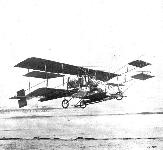 |
Журнал - Flight за 1910 г.
|
| Glenn Curtiss, on his biplane, during an exhibition flight over the sea at Atlantic City.
|
 |
G.Loening - Takeoff into Greatness /Putnam/
|
| Curtiss plane at Governor's Island, New York.
|
 |
В.Шавров - История конструкций самолетов в СССР до 1938 г.
|
1909 Curtiss Reims Racer
Country of Origin: USA Designed and built by Glen Curtiss
Span: 26'3" Length: 30'4" Weight: 700 lb
|
 |
Журнал - Flight за 1909 г.
|
| THE CURTISS BIPLANE. - General view of the machine on terra firma, showing the elevator in front of the main decks. The camber of the decks is particularly well shown in this view, which should be compared with the drawing.
|
 |
В.Шавров - История конструкций самолетов в СССР до 1938 г.
|
| "Кертис" сухопутный
|
 |
P.Bowers - Curtiss Aircraft 1907-1947 /Putnam/
|
| The Model E was a two-seater, but with only 40 hp, the US Army's Aeroplane No.6 of 1911 was rigged as a single-seater.
|
 |
G.Swanborough, P.Bowers - United States Navy Aircraft since 1911 /Putnam/
|
| Naval Aviator No 1, Lt T.G. Ellyson, in a Curtiss Pusher at San Diego, January 1911 prior to purchase of Navy s first aeroplane.
|
 |
P.Bowers - Curtiss Aircraft 1907-1947 /Putnam/
|
| A true replica of a 1912 Curtiss pusher built by Glenn Curtiss and associates at Garden City after World War I. Powerplant was a war-surplus Curtiss OX-5.
|
 |
P.Jarrett - Pioneer Aircraft: Early Aviation Before 1914 /Putnam/
|
| About to start up the Model D pusher. The mechanic has the inenviable task of swinging the propeller amid the tailbooms and their bracing, and then getting clear of the aircraft as quickly (and carefully) as possible. Clearly visible here are the youke round the pilot's shoulders and the simple bamboo pushrod control from the wheel to the front elevator.
|
 |
P.Jarrett - Pioneer Aircraft: Early Aviation Before 1914 /Putnam/
|
| A dramatic low fly-past, with the engine emitting generous clouds of smoke. The interplane ailerons, attached to the outermost rear struts, are well shown.
|
 |
P.Bowers - Curtiss Aircraft 1907-1947 /Putnam/
|
| Early Curtiss single-seat Model D.
|
 |
Журнал - Flight за 1909 г.
|
| THE CURTISS BIPLANE IN FLIGHT. - Snapshot taken during one of the successful trial flights which Mr.Curtiss himself made at Hammondsport before handing his machine over to the Aeronautic Society at Morris Park. The photograph shows the flyer at a height of 100 feet above the ground.
|
 |
G.Swanborough, P.Bowers - United States Military Aircraft since 1909 /Putnam/
|
| Curtiss Model D
|
 |
Журнал - Flight за 1910 г.
|
| LOS ANGELES FLIGHT MEETING. - Remarkable photograph of Curtiss in flight, on his biplane, over the Grand Stands, taken from a captive balloon.
|
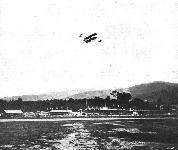 |
Журнал - Flight за 1910 г.
|
| A fine flight by Reimsdyck on his Curtiss biplane during the successful Cannes Flight Meeting.
|
 |
Журнал - Flight за 1910 г.
|
| AEROPLANES FOR MILITARY SCOUTING. - Glenn Curtiss on his biplane with Lieut. Fickle, of Governor's Island, U.S.A., target practising with a rifle from the machine while in flight.
|
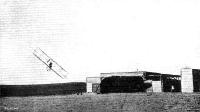 |
Журнал - Flight за 1912 г.
|
| An example of a banking by Lincoln Beachey at Los Angeles not to be imitated. With this sort of circus performance it is hardly surprising to hear of so many sudden death from America.
|
 |
Журнал - Flight за 1910 г.
|
| C. K. Hamilton on his biplane, racing Kjelson on an S.P.O. car at Atlanta Speedway (U.S.A.).
|
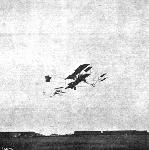 |
Журнал - Flight за 1910 г.
|
| Mars and Glenn Curtiss on Curtlss machines circling round each other over Sheepshead Track, U.S.A.
|
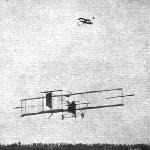 |
Журнал - Flight за 1910 г.
|
| Mr. Charles K. Hamilton at Hempstead (U.S.A.) executing one of his sensational "trick" flights. The lower machine is Captain Baldwin's biplane.
|
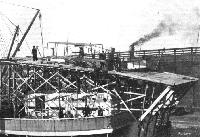 |
Журнал - Flight за 1910 г.
|
| LAUNCHING AN AEROPLANE FROM THE DECK OF A LINER. - McCurdy's biplane on the special launching stage prepared on the Hamburg-American liner "Pennsylvania" for the proposed test which had to be postponed, as referred to in FLIGHT.
|
 |
Журнал - Flight за 1911 г.
|
| The Selfridge Military Camp, San Francisco, from and back to which Eugene Ely flew on his Curtiss biplane when making his flight on to the U.S. warship "Pennsylvania." Note the Curtiss machine in readiness for its trip. On the right Eugene Ely is seen in flight across the sea at San Francisco, en route for the deck of the "Pennsylvania."
|
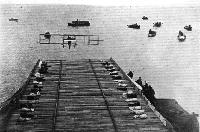 |
Журнал - Flight за 1911 г.
|
| Mr. Eugene Ely just alighting with his Curtiss biplane on the special landing stage erected on the U.S. warship '"Pennsylvania" at San Francisco. Note the bags of sand connected up to act as brakes in stopping the aeroplane when running up the stage.
|
 |
Журнал - Flight за 1911 г.
|
| General view of the U.S. warship "Pennsylvania" at the moment when Eugene Ely was alighting on the special landing superstructure. Note the human masses of seamen manning every available inch of the vessel giving a sight of the feat.
|
 |
P.Bowers - Curtiss Aircraft 1907-1947 /Putnam/
|
| An early Curtiss promotional effort resulted in pilot Eugene Ely making the first take off of an aeroplane from a ship, on 10 November, 1910. This is the second take off, made after landing on the uss Pennsylvania, on 18 January, 1911.
|
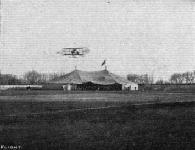 |
Журнал - Flight за 1911 г.
|
| "INTERNATIONAL AVIATORS" IN AMERICA. - On the left, Hamilton starting away for his scouting trip on the Mexican frontier. The "hangar" is where the machines rest. This holds comfortably twelve machines, which are roped off for exhibition purposes.
|
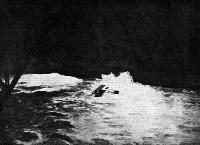 |
Журнал - Flight за 1911 г.
|
| FLYING OVER NIAGARA FALLS. - It will be remembered we recently recorded the fact that Lincoln Beachey, on June 27th, flew over the Niagara cataract on a Curtiss biplane. Whatever view one may take of a feat of this character, at least the above picture records a remarkable achievement which will go down to history. The photograph shows Beachey passing under the upper steel bridge at Niagara Falls. After having circled over the cataract he then swooped down beneath the arches of the bridge and continued on down the gorge almost to the whirlpool, finally regaining terra firma on the Canadian side.
|
 |
Журнал - Flight за 1911 г.
|
| Mr. St. Henry flying on a Curtiss biplane at the Dominion Exhibition in Regina, Canada.
|
 |
P.Bowers - Curtiss Aircraft 1907-1947 /Putnam/
|
| Triplane adaptation of Curtiss Model E with monoplane forward elevator
|
 |
K.Molson, H.Taylor - Canadian Aircraft since 1909 /Putnam/
|
| The Constable-built Curtiss-type pusher. It is possible that the number 2 on the rudder implies that this was the Constables’ second aircraft.
|
 |
K.Molson, H.Taylor - Canadian Aircraft since 1909 /Putnam/
|
| The Ellis-Blakely Curtiss-type, West Wind.
|
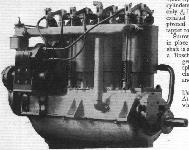 |
Журнал - Flight за 1909 г.
|
| THE CURTISS AERO-MOTOR. - General view of the 4-cyl. Curtiss engine used on the Curtiss biplane. The cylinders are 5/32 in. thick, and have copper jackets. The weight, without magneto, is 85 lbs.
|
 |
P.Bowers - Curtiss Aircraft 1907-1947 /Putnam/
|
| Famous acrobatic pilot Lincoln Beachey seated in his special Curtiss pusher fitted with standard controls, including shoulder-yoke for the ailerons.
|
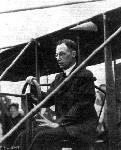 |
Журнал - Flight за 1910 г.
|
| Chas. F. Willard, in his Curtiss machine on which he carried in America, at Albany Park meeting, three passengers. Both he and his sister, Miss Emily T. Willard, are given as competitors at the Harvard aviation meeting.
|
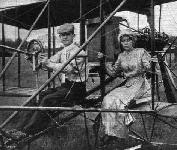 |
Журнал - Flight за 1910 г.
|
| Mars, who on his Curtiss machine has been making good flights in America, amongst other trips, flying from Coney Island to Staten Island, and his wife.
|
 |
Журнал - Flight за 1911 г.
|
| Eugene B. Ely. who made the remarkable flight on a Curtiss biplane on January 18th, starting from San Francisco and alighting on the deck of the warship "Pennsylvania" standing 13 miles out at sea, and then returning to his starting place. Beside him is Mrs. Ely.
|
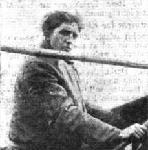 |
Журнал - Flight за 1910 г.
|
| AMERICAN FLYING MEN AT BELMONT PARK MEETING. - Charles K. Hamilton.
|
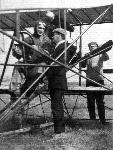 |
Журнал - Flight за 1911 г.
|
| John Wilmer sends us greeting from Plattsburg, N.Y., in the above photograph, as '"From the man who fell from the balloon last October 2nd, I fly at Ottawa County State Fair, week September 11th."
|
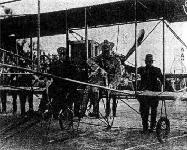 |
P.Jarrett - Pioneer Aircraft: Early Aviation Before 1914 /Putnam/
|
| Curtiss and Wright both sold aeroplanes to the US military, but they were soon declared obsolete and dangerous. Here, at the Harvard-Boston Meet in 1910, rifle-armed Lieutenant Fichel of the US Army adopts the ground-strafing position on a Curtiss pusher, alongside pilot C F Willard.
|
 |
P.Jarrett - Pioneer Aircraft: Early Aviation Before 1914 /Putnam/
|
| The Dan Taylor's demonstrates the shoulder-yoke aileron control of the Curtiss Model D pusher biplane. On the left he is sitting upright and the ailerons are neutral. On the right he leans to the right, and the yoke around his upper torso leans with him, moving the interwing ailerons to induce a bank to the right. The leather strap passing round his shoulders and behind his neck assits in manipulation of the yoke control.
|
 |
P.Jarrett - Pioneer Aircraft: Early Aviation Before 1914 /Putnam/
|
| The dual foot controls of the Curtiss Model D. The pilot's left foot is on the 'claw' brake, the pedal for the friction brake on the front wheel is in the centre, and his right foot is on the throttle pedal.
|
 |
P.Bowers - Curtiss Aircraft 1907-1947 /Putnam/
|
| aviatrix Ruth Law learned to fly on a Wright aeroplane and had to have this entirely difierent control system installed in her Curtiss.
|
 |
P.Bowers - Curtiss Aircraft 1907-1947 /Putnam/
|
| Curtiss-Herring No.1 Reims Racer
|
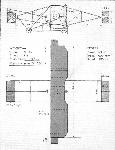 |
Журнал - Flight за 1909 г.
|
| CURTISS BIPLANE. - Elevation and plan showing the leading constructional features and dimensions of the Curtiss biplane, which has been made in America by Mr. Glenn H. Curtiss in conjunction with Mr. A. M. Herring. It should be noted that the weight of the machine mounted is only 550 lbs., and that it is fitted with a particularly light engine. Instead of warping the main decks as on the Wright machine, lateral control is obtained by independent balancing planes.
|
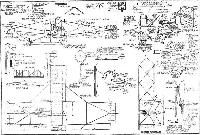 |
Журнал - Flight за 1910 г.
|
| NEW CURTISS BIPLANE. - General arrangement and constructional details.
|


















































